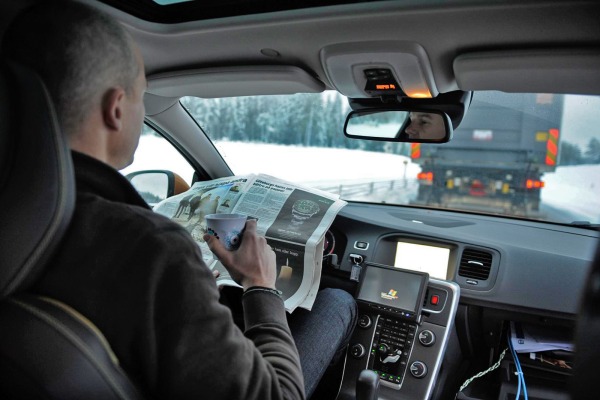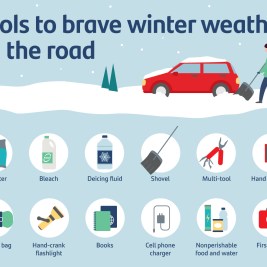
If you’ve ever gotten car sick, it’s a feeling you’re not likely to forget – queasy stomach, dizziness, cold sweat, maybe, or a general feeling of uneasiness or discomfort.
In fact, you may be feeling a little sick just reading about the symptoms. (Sorry about that.)
If so, the advent of self-driving, or autonomous, vehicles may be bad news – unless you also own stock in or work for a manufacturer of medications used to ease car sickness or its related conditions of air sickness, sea sickness and amusement-ride motion sicknesses.

“Motion sickness is expected to be more of an issue than in conventional vehicles,” said Michael Sivak and Brandon Schoettle of the University of Michigan Transportation Research Institute (UMTRI) after a survey of 3,200 adults in the United States and five other countries. “The reason is that the three main factors contributing to motion sickness are elevated in self-driving vehicles.”
Those factors involve conflict between sufferers’ visual and balance/orientation systems, inability to anticipate the direction of motion, and lack of control over the direction of motion.
However, Sivak also noted that “the frequency and severity of motion sickness is influenced by the activity that one would be involved in instead of driving” the vehicle.
And that’s where some former drivers would get into trouble in self-driving vehicles.
Asked what they would do instead of driving in a fully autonomous vehicle, about 37 percent of Americans said they would do things the researchers said increase the likelihood of motion sickness. Those include reading, texting, watching movies or television, playing games or working.
But the UMTRI report also found that more than 60 percent of Americans would watch the road, talk on the phone or sleep, activities that would not necessarily lead to motion sickness.
Those percentages apply to former drivers who are now passengers, Sivak said in an email.
About 33 percent of people are susceptible to motion sickness even in mild circumstances, according to Medical News Today, and 66 percent are susceptible in more severe conditions.
The researchers suggest that automakers can help reduce the likelihood of passengers getting motion sickness by the way they design self-driving vehicles. That includes maximizing visual fields with large windows; mounting transparent video and work displays that require riders to face forward; and eliminating swivel seats, restricting head motion and installing fully reclining seats.
But, until those ideas find their way into your self-driving vehicle, you’ll just have to sleep it off it seems. Or be sure to take your Dramamine.


